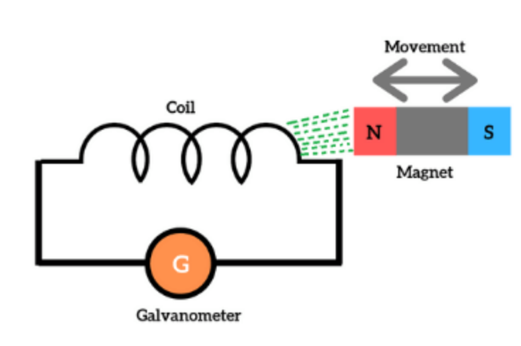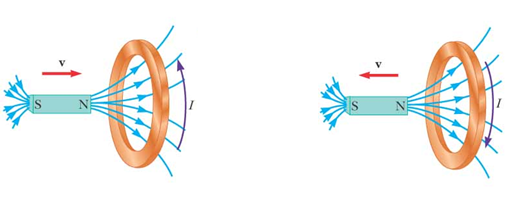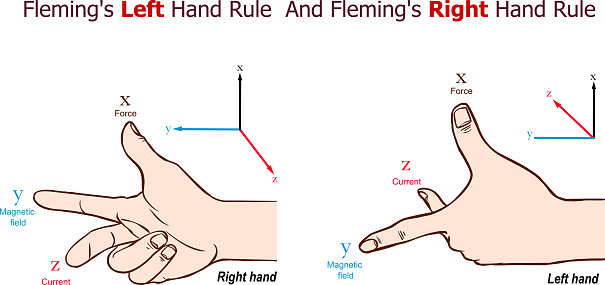The central theme of this report was the study of the principles governing the physics of electromagnetic induction. The report examined Faraday’s law, which characterises the generation of EMF in a closed circuit when an external magnetic field is induced, and Lenz’s law, which illustrates the circuit’s ability to resist external inductive action. The generalising principle for the two rules was Fleming’s mnemonic laws, which allow the directions of electromagnetic vector quantities to be determined with two hands.
Introduction
A thorough understanding of the nature of electrophysical processes is the basis for a successful, thoughtful grasp of the subject matter. When considered in isolation, the physical laws are a mediocre mathematical construction, but the study of the phenomena’ interrelationship allows the academic framework to be expanded. This paper examines three important electricity laws: Faraday’s law, Lenz’s law, and Fleming’s rules. Each law relates to a branch of electromagnetic induction physics. In particular, the general idea of induction comes down to the fact that when a magnetic flux emitted by a magnetic field source passes through a conductor, an electric current is generated in the circuit. It follows from this that if a conductor is placed in a magnetic field and started to move, an inherent EMF will arise in the conductor.

Overview of Laws
Faraday’s Law
One of the first principles of electrodynamics to define the relationship between an external magnetic field and the generation of EMF is Faraday’s law. In general terms, Faraday’s law should be formulated as the proportionality of the generated EMF to the rate of change in magnetic flux, as shown in equation [1]. In other words, a change in the intensity of magnetic flux (as the magnet moves) near a closed circuit results in the induction EMF, which is opposite in direction and equal in magnitude to the flux. Consequently, the faster the magnetic field changes, the greater the voltage will be shown in the circuit. The equation [1] states that the EMF in the circuit is directly proportional to the rate of change of the magnetic flux as a function of time, and in the case of a large number of turns of the inductor coil, their number is added to the formula, N.
This fundamental law is important for understanding electrodynamic processes in a closed circuit. In particular, it is used to determine the operation of transformers, generators, electric motors and chokes (Faraday’s law of induction, 2018). Thus, transformers carry the energy of an alternating electromagnetic field through the phenomenon of mutual induction, thus transforming the magnitude of the voltage at different terminals. If one pays attention to equation [1], there is a minus in the equation, which is fully justified by Lenz’s law.
Lenz’s Law
Lenz’s law postulates a second important electrodynamic property of the circuit related to the induction current’s direction. It is worth clarifying that the induction current, which arises in a closed circuit as a result of a change in magnetic flux, always has a definite direction. Moreover, as known, the current flow itself creates a unique magnetic field with its direction. This means that the magnetic field lines of force from the magnet have a definite direction, according to which, by the right-hand rule, the current must flow clockwise in the circuit (Three right-hand rules, 2018). However, in reality, Lenz’s law reflects the opposite effect: the electric current generated in the circuit has a different direction than expected. The explanation for this paradox lies in the tendency of the circuit to resist a change in magnetic flux in order to weaken the action of the cause that initiated the induction current generation.

It must be recognised that Lenz’s law is valid regardless of the type of circuit or the direction of motion of the magnetic field lines. In particular, if the area of the circuit changes, the induction current is induced by the Lorentz force, but the induction current attenuates the external magnetic field’s action. On the other hand, the magnitude of the magnetic flux can be increased, in which case the eddy electric field’s effect induces the induction current. However, even in this case, the current will be directed to inhibit the external field’s effect. Remarkably, the magnetic field can be generated by the flow of current in the adjacent circuit. Then, in the circuit in question, the induction current may have the same direction as this field’s lines. In particular, if the external current increases numerically, a new current is observed to decrease this increase and vice versa.
Fleming’s Rules
A deeper understanding of the relationship between field lines’ directions, current and resultant magnetic force is possible with Fleming’s two mnemonic rules. When working with electrical machines, these are necessary rules, be it generators (right hand) or electric motors (left hand). More specifically, the interaction of an external magnetic field with the electromagnetic field of a circuit produces a vector physical force, the direction of which can be determined by means of mnemonics. Remarkably, the resulting magnetic force is always perpendicular to the two fields, forming a three-axis plane. To apply these rules, the middle finger should point in the direction of the current, the index finger in the direction of the field lines, and the thumb will describe the vector of the final magnetic force. An illustrative example of the application of Fleming’s rules might be to consider the circuit diagram of a standard electric motor, which has a rotor and stator. Basic models of simple motors consist of a ring-shaped metal stator in which the rotor, wrapped in copper wire, rotates. An electric current is fed from an external source into the rotor, creating an electromagnetic field. This field, in turn, interacts with the magnetic fields of the two permanent magnets in the stator, generating a new physical force. Using Fleming’s left-hand rule, it is possible to identify the resulting direction of this force.

Conclusion
In this report, the nature of electromagnetic induction laws has been discussed in detail. To summarise, these laws are the fundamental principles explaining electrodynamic processes when an external magnetic field is applied to a closed circuit. Faraday’s law defines the equality between the inductive EMF and the magnetic flux changed over time. Lenz’s law shows that the inductive current has the opposite direction to the external field, which is due to the tendency to suppress the circuit’s effect. Fleming’s mnemonic rules apply to define the resultant magnetic force’s direction arising from the magnetic and electromagnetic fields’ interaction. The reports have shown real examples of the applicability of these laws and defined their relationship.
Reference List
Altium Designer (2018) What is Lenz’s law and how does it affect PCB design? Web.
Corbac40 (2019) Regra da mão esquerda. Web.
Electrical4U (2021) Faraday’s laws of electromagnetic induction: first & second law. Web.
Faraday’s law of induction: how transformers work (2018). Web.
Three right hand rules of electromagnetism (2018). Web.
